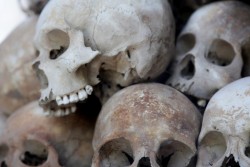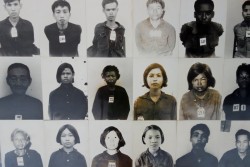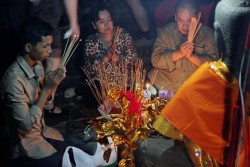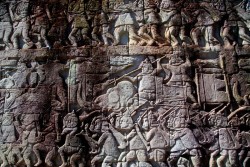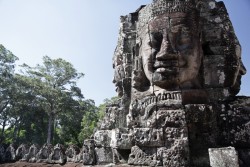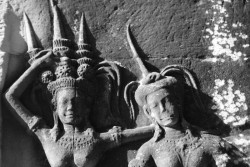Cambodia is a bipolar country – that’s as best as I could describe my impressions of it from our short time there. Upon our arrival, the King (yes they have a king), set off an elaborate 30 minute fireworks show over the Mekong in honor of his own birthday. As he watched from behind the golden gates of his palace, rabid dogs chased street orphans down the littered and rat infested alleys. In the capital of Phnom Penh, it’s seems entirely possible to live on 5-star meals for a few dollars a day, while the lower class picks through leftover rotten produce from the markets. There isn’t anything money can’t buy you if you start asking around, yet at the same time, it can be nearly impossible to get straight forward answers from anybody without them wanting a cut.
In the north, near the famed Angkor Wat, there are more well-preserved ancient temples and ruins than we’ve seen anywhere else, yet the surrounding local cities have been utterly destroyed and changed by tourism. As the peasants go to bed at sundown, the party is just beginning at the clubs and bars where westerners stumble upon picnic tables and countertops, “dancing” until the beer runs out.
The country seems to be living in a stupor, where nothing makes sense, but compared to the trials and tribulations that occurred less than 40 years ago, maybe this is the good life? Or maybe it’s the best they can do to put together some semblance of an ordinary life, even though there are deep scars hiding behind every smile. Sadly, we’ve calculated that the current generation in over a third of the countries we’ve visited this past year has lived through a genocide, and Cambodia is no stranger to that list.
A political group called the Khymer Rouge decided it had the responsibility to rid the country of anyone opposing them in 1975, and went about their work relatively un-challenged until almost 2 million were dead and the Vietnamese intervened. We visited a school turned prison, where prisoners were meticulously documented, photographed and forced to give fake admissions of guilt before they were trucked off to the killing fields where they toiled in the fields for 24 hours a day. Truckload after truckload of “enemies” (defined as anyone with connections to a government, all professionals and intellectuals, local ethnicities that weren’t Cambodian and anyone incapable of performing agricultural work) were delivered and subsequently electrocuted and thrown into mass graves where their bones still lie today.
We only spent a week or two in Cambodia, but felt like we had only skimmed the tip of the iceberg in trying to understand the complexity of this country and the history that has shaped it. If there’s one place that feels like it’s fallen off the map but deserves a little more attention, this is it.


